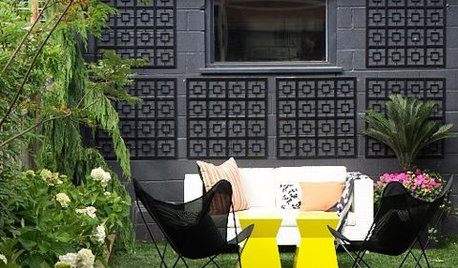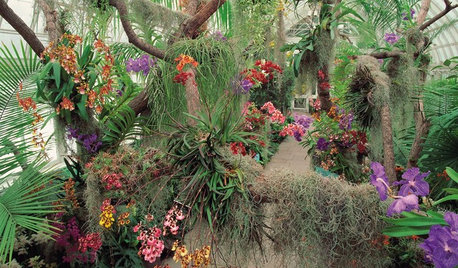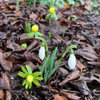Black-Eyed Susan fungus
learningasigo
16 years ago
Related Stories

FLOWERSRudbeckia Mania: Go Beyond Black-Eyed Susan in the Garden
Branch out from typical nursery fare, with lesser-known Rudbeckia species that have delightfully unexpected features
Full Story
GARDENING GUIDESGreat Design Plant: Black-Eyed Susan
Plant seeds this fall for rich swaths of golden blooms in the garden come summer
Full Story
COLORDreaming in Color: 8 Eye-Opening Yellow Bedrooms
Start your day energized and cheerful with bedroom hues that sing of sunshine or golden fields
Full Story
GARDENING FOR BUTTERFLIESButterfly Gardening: Delight the Eyes With Living Sculptures
Surprise and thrill with a garden that attracts magical winged creatures, bringing color, movement and life
Full Story
DECORATING GUIDESGreat Color Combination: A Green and Black Palette
For a fresh, crisp look from the living room to the laundry room, take a cue from nature
Full Story
MOST POPULAR11 Reasons to Paint Your Interior Doors Black
Brush on some ebony paint and turn a dull doorway into a model of drop-dead sophistication
Full Story
LANDSCAPE DESIGNGet a Knack for Black in the Garden
Dark walls, furniture and foliage do more than add drama in the landscape; they can be strategic design elements
Full Story
COLOR8 Reasons to Paint Your Interior Trim Black
Hide imperfections, energize a space, highlight a view and more with a little bit of darkness that goes a long way
Full Story
FLOWERSSee the Amazing Orchids Unfolding at a New York Garden Show
Get an eyeful of awe-inspiring orchids in incredible colors and learn how to keep one happily blooming at home
Full Story
NEUTRAL COLORS8 Great Color Palettes: Surprising Bedroom Neutrals
Peaceful plum, relaxing black and many shades of gray show an unpredictably neutral nature in the bedroom
Full StoryMore Discussions







gardengal48 (PNW Z8/9)
learningasigoOriginal Author
Related Professionals
Jennings Landscape Architects & Landscape Designers · New Mexico Landscape Architects & Landscape Designers · Quincy Landscape Architects & Landscape Designers · Severn Landscape Architects & Landscape Designers · Summit Landscape Architects & Landscape Designers · Harvey Landscape Architects & Landscape Designers · Concord Landscape Contractors · Doctor Phillips Landscape Contractors · Eagle Landscape Contractors · Lees Summit Landscape Contractors · Medford Landscape Contractors · Metairie Landscape Contractors · Palos Verdes Estates Landscape Contractors · Rockland Landscape Contractors · Forest Hill Landscape Contractorsnancyd
diggingthedirt
leslie197
diggingthedirt
leslie197
NJCCM1_AOL_COM
treehugger101